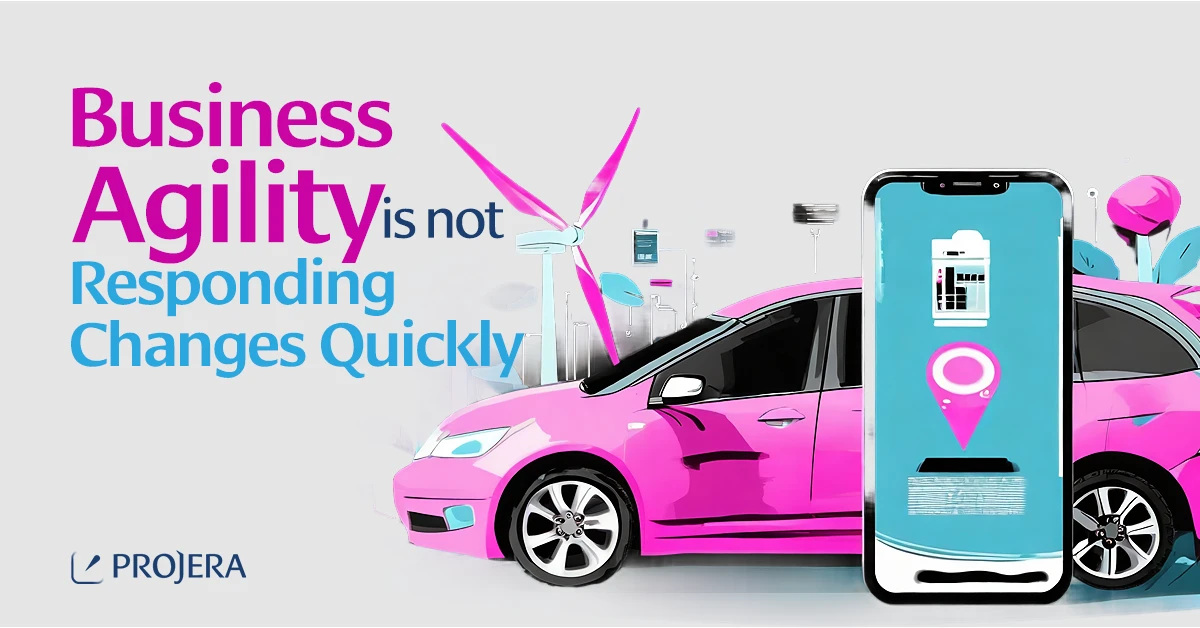
Business Agility is not Responding Changes Quickly
In today’s fast-paced world, the term ‘business agility’ often gets misconstrued as merely a reactive approach to change. However, this perspective falls short of the concept’s true essence and potential. Business agility is not about swift reactions; it’s about being ruthlessly proactive. It’s about sensing opportunities early, acting on them decisively, and seizing them faster than competitors.
Sensing Opportunities: The First Step to Proactive Agility
Understanding the Market: Business agility begins with a keen understanding of the market. Companies must develop an acute sense of awareness, identifying shifts in consumer behavior, technological advancements, and emerging trends before they become mainstream.
Predictive Analytics: Leveraging data and predictive analytics is crucial. Businesses need to forecast future trends and prepare strategies accordingly, rather than waiting for changes to occur.

Early Adoption of Camera Technology in Smartphones
Consider the smartphone industry, a sector characterized by rapid technological advancements and shifting consumer preferences. A few years ago, smartphone companies noticed a growing trend: consumers were increasingly using their phones for photography, sharing images on social media, and valuing camera quality as a key purchasing factor. Forward-thinking companies, by understanding this market shift, began to focus on enhancing camera capabilities in their smartphones.
These companies used predictive analytics to understand how this trend would evolve. They analyzed social media usage patterns, consumer feedback, and technological developments in camera sensors and image processing. Predictive models suggested that consumers would not only continue to prioritize camera quality but would also be interested in features like AI-enhanced photography, low-light imaging, and high-resolution video capabilities.
In response, some companies started investing heavily in advanced camera technology. They were among the first to introduce features like multiple camera lenses, optical zoom, and sophisticated image stabilization. These features, initially considered premium, quickly set a new standard in the market.
The companies that proactively adapted to this trend gained a significant competitive advantage. They captured a larger market share by meeting consumer demands ahead of their competitors. This move not only increased immediate sales but also established these brands as leaders in smartphone innovation.
Acting Decisively: The Heart of Business Agility
Cultivating a Proactive Mindset: Agility is rooted in a mindset that favors proactive decision-making. This means encouraging a culture where employees are empowered to act on opportunities without undue delay.
Streamlined Decision-Making Processes: Reducing bureaucratic hurdles and streamlining decision-making processes are vital. Agile businesses can pivot quickly because they have structures in place that support rapid decision-making.
Rapid Adaptation to E-commerce Trends
A prominent e-commerce company exemplifies the proactive mindset crucial for business agility. Recognizing the trend towards mobile shopping, the company encouraged its team to prioritize mobile-first strategies. This directive was not just top-down; employees at all levels were empowered to propose and implement mobile-centric ideas, from optimizing the mobile app’s user interface to tailoring marketing strategies for mobile users.
To support this, the company streamlined its decision-making processes. Instead of lengthy approval chains, they established smaller, cross-functional teams with the autonomy to make quick decisions. These teams were equipped with the necessary resources and authority to execute their ideas rapidly. This approach allowed for faster iteration and implementation of mobile-centric initiatives.
One of the significant outcomes was the rapid development and launch of a mobile app feature that used augmented reality (AR) to improve the shopping experience. This feature allowed customers to visualize products in their own space before purchasing, significantly enhancing customer engagement and satisfaction.
The streamlined decision-making process meant that from the initial idea to launch, the feature was developed and deployed in a fraction of the time it would have taken with traditional bureaucratic processes.
As a result, the e-commerce company not only stayed ahead of the curve in mobile shopping but also set a new industry standard for customer experience. Their proactive and agile approach in decision-making led to increased customer loyalty and a significant uptick in mobile sales.
Seizing Opportunities: Faster Than the Competition
Speed as a Competitive Advantage: The ability to move faster than competitors is a significant edge. This requires not just speed in decision-making, but also in execution.
Innovation as a Driver: Continuous innovation is key. It’s not enough to be fast; businesses must also bring something new and valuable to the table, staying ahead of the curve.

Accelerating Electric Vehicle (EV) Market Penetration
An electric vehicle manufacturer serves as a prime example of using speed as a competitive edge. While the concept of electric vehicles was not new, this company accelerated its development and production of EVs at a time when most traditional automakers were cautiously observing the market. They quickly recognized the growing consumer interest in sustainable transportation and the potential shift away from fossil fuels.
The company streamlined its production processes, adopted innovative battery technologies, and established efficient supply chains. This rapid execution allowed them to roll out new models faster than established automakers could adapt their traditional lineups to include electric options.
Innovation was at the heart of their strategy. The company didn’t just focus on speed; they also introduced groundbreaking features in their vehicles, such as advanced autonomous driving capabilities, superior battery range, and unique software updates that continuously improved vehicle performance. These innovations were not mere incremental changes but significant leaps that set new industry standards.
Their approach paid off handsomely. By moving faster than the competition and continuously innovating, the company quickly became a leader in the electric vehicle market. They captured a significant market share, not only among environmentally conscious consumers but also among those interested in cutting-edge automotive technology.
This rapid and innovative approach not only positioned the company as a leader in the EV market but also pressured traditional automakers to accelerate their own EV strategies. The company’s success demonstrated the effectiveness of using speed and continuous innovation as tools to seize opportunities and stay ahead of competitors in a dynamic industry.
Challenges and Considerations
Balancing Speed with Deliberation: While speed is essential, it should not come at the cost of thoughtful deliberation. The risks associated with hasty decisions must be carefully weighed.
Sustaining Agility: Maintaining this level of agility over time requires constant vigilance and adaptability. It’s a continuous process, not a one-time effort.
A New Paradigm of Business Agility
Business agility in the truest sense is a proactive pursuit. It’s about creating and capitalizing on opportunities before others even recognize them. By redefining agility as a proactive, rather than reactive, approach, businesses can position themselves to lead rather than follow. As the business world continues to evolve at an unprecedented pace, the ability to anticipate, adapt, and act swiftly will distinguish the leaders from the followers.



